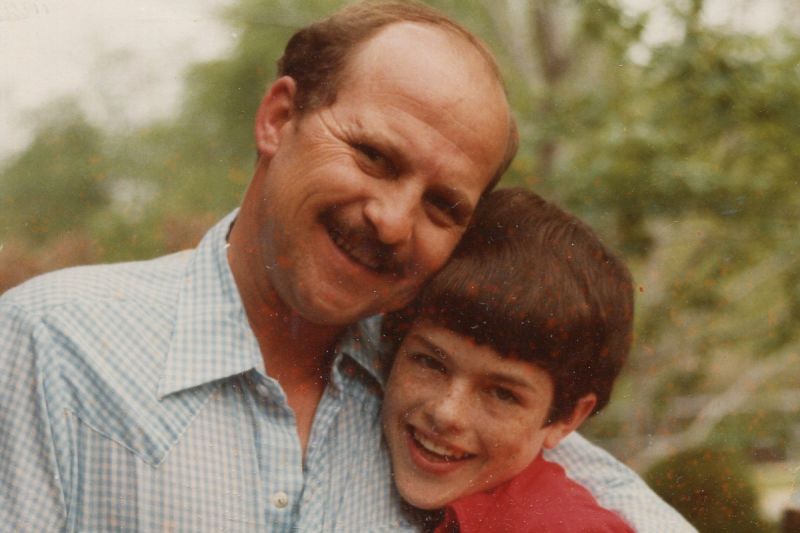Your Guide to Raising an Adopted Child of Another Race
Tips and Hints to Help You Prepare

Every year, hundreds of expectant mothers choose transracial adoption, placing their babies with adoptive parents of a different race. Like any other adoption, transracial adoption is a lifelong journey, complete with its own set of unique joys and challenges.
In some ways, raising a child of a different race is no different than raising a child who shares your racial background. However, there are many unique and subtle ways in which race may impact parenting decisions for transracial adoptive families. As this form of adoption becomes increasingly common, it is important for families to truly understand their children’s needs and experiences as transracial adoptees.
Raising an adopted child of another race is not always easy. If you’re considering this path, you need to educate yourself about the realities and challenges ahead. That’s where American Adoptions comes in. If you’re interested in adopting a child of a different race, our specialists will talk in depth with you about what to expect — and what you will need to do to successfully raise a transracially adopted child.
For more information, please contact us online. In the meantime, this article is a great place to start your research.
Raising an Adopted Child of Another Race: Some Tips
Raising a child of a different race will require parents to make certain sacrifices and changes to best benefit their son or daughter. Most often, this will mean stepping out of your comfort zone to put you and your family in situations with more diverse peers, role models and racial mirrors. Transracial adoption is not easy — but, with a lot of education and preparation, you can prepare yourself for the journey ahead.
Here’s how:
Discuss Race with Your Children
Your child’s race has no impact on your bond and love for them, and this can cause many adoptive parents to view race as a nonissue. But the truth is that it is impossible to ignore racial differences entirely, and parents who are raising an adopted child of a different race must be prepared and comfortable addressing physical differences and talking about racial issues.
If you’re considering raising a biracial adopted child or a child of any other race, you cannot parent in a “color-blind” way. Instead, you need to take proactive steps to talk about and celebrate racial differences from the moment you bring your child home. This will be difficult at some times; if you’re white, you will need to come to terms with the privilege you hold and the different experiences awaiting your child. If you’re not ready for the hard parts of this conversation, transracial adoption may not be right for you.
Every multiracial family has different experiences, and there are different views on when, how and to what extent to discuss race. While there is no simple guidebook for families to follow, consider the following suggestions:
- Recognize different needs: Your child will likely have different hair and skincare needs than you, and you need to educate yourself on how to best care for them. For example, if you are a white parent raising an African American child, your child’s hair will not only likely look different from yours — it will also require different care. Recognize and embrace your physical differences, remind your child of how beautiful they are, and address your child’s specific needs.
- Confront racism: While you do your best to surround your child with friends and family who are open-minded and accepting of people of all backgrounds, you cannot control every person your child will come in contact with. Chances are your child or your family will face prejudice at some point. Learn how to talk with your child about racism even before your child is faced with it, and give him or her plenty of opportunities to discuss these issues with you. In addition, talk at length with your family before raising an adopted child of another race — they need to be on board, too, or your child will recognize how differently they’re treated.
- Talk about cultural identity: Transracial adoptees may struggle to determine their cultural identity. Teach your child about his or her ethnic, racial and cultural background, and be prepared to answer questions that will help them address these unique identity challenges. Raising a child of a different race is a lifelong journey, so be open and willing to answer your child’s questions throughout their whole life — even when those questions are difficult.
- Learn about different races: Do not focus solely on your child’s race (or your own race) during these conversations. Try to use examples from various races and cultures, and create a home environment that is accepting, loving and open to people of all backgrounds.
- Listen: Just as important as talking about race — and maybe even more so — is listening to your child. Give them opportunities to share their experiences without being defensive, dismissing their emotions or offering excuses or denial. Respond empathetically to any sadness, anger or pain they express. Unless you are a transracial adoptee yourself, you cannot fully understand your child’s experience and perspective, and this will be a learning opportunity for you as well as your child.
Discussing race can be difficult at first, especially for parents who have never considered the effect of race on their own lives. However, the more you talk about race with your child, the more comfortable the topic will become.
Above all, it is important in every conversation about race to ensure your child knows that you love them for exactly who they are — and that it’s their differences that make them special and unique.
Provide Opportunities to Explore Diversity
Racial and cultural identity can play a big role in your child’s overall identity development, and it is important that you give your child plenty of opportunities to explore his or her own racial background. This can seem like the easy part of raising an adopted child of another race, but think hard: Where can you find natural communities of people the same race as your child? Don’t be surprised if you have to change neighborhoods or drive farther away for extracurriculars to provide that experience for your child.
Adoptive parents should give their children hands-on opportunities to learn about and interact with others who share their racial and cultural background. Here are some suggestions for helping your child explore diversity:
- Provide racial mirrors for your child. Seek out adults of the same race to be their doctor, dentist, soccer coach and more. For example, if you’re wondering how to raise an adopted black child, you should surround yourself with black individuals and learn from them as your child grows up. It’s not a one-time conversation; be prepared to ask questions about raising a child of a different race throughout your life.
- Surround your child with peers of various racial backgrounds, including other children of his or her race. Send your child to a racially diverse school, enroll them in diverse summer camps, sports teams and music programs, and make playdates or join a play group of culturally diverse families and children.
- Seek out other multiracial families, especially families who have experienced transracial adoption. It is wonderful to expose your child to other people of various racial and ethnic backgrounds, but no one will understand and relate to his or her experience like a fellow transracial adoptee. Try reaching out to local adoption support groups to find other transracial families to connect with.
- Provide your child with culturally diverse dolls and toys, as well as books and movies about his or her culture and transracial adoption.
- Attend cultural events and celebrations where your child can meet and interact with others of his or her race.
- Interact with adults of different races in your neighborhood, school district and church community. Invite family friends of many different races and cultures into your home, and help build relationships between your child and positive adult role models of your child’s race.
While you may not know what it’s like to grow up as a person of your child’s race, there are many others who do. Provide your child with as many opportunities as possible to interact with other children and adults who can share in those experiences.
And don’t forget to educate yourself as you do so: Raising an adopted child of a different race is a lifelong learning experience for adoptive parents, too. You may make mistakes along the way, so it’s important to recognize your shortcomings and find solutions to give your child what they need.
How to Respond to Comments and Questions
While society is becoming increasingly tolerant and accepting of diversity, multiracial or multicultural families often still draw attention in certain communities. Even after creating a safe and accepting environment in your home and surrounding your child with diversity, you and your family may occasionally attract unwelcomed questions or comments that can be hurtful to you and your children.
Here are some steps you can take to prepare for and respond to these types of situations:
- Have short, simple responses prepared ahead of time. Within two or three sentences, you should be able to quickly and easily let ogling and nosy strangers know that families can be formed in many ways, that you are proud of your multicultural family and that the topic is not open for further discussion.
- Nonadoptive parents are generally not expected to relay the details of their child’s birth story to strangers they pass on the street, and you shouldn’t be, either. Remember that you do not owe anyone an explanation of your family’s story. After making your brief response to their question or comment, feel free to change the subject or step away from the conversation.
- Do your best to keep your responses positive and light-hearted. Model appropriate responses for your children, and have discussions with them about how they can react if placed in a similar situation. Always ensure that your interactions with strangers communicate to your children that you are proud of your family’s racial makeup and that your child is loved, accepted, and perfect the way he or she is.
- While raising an adopted child of another race in no way obligates you to be the “face of adoption,” you do have an opportunity to educate others about adoption and the issues that transracial adoptees face. While it is not your job to explain adoption to every stranger you meet, also recognize that some people who ask questions are genuinely interested in the topic of adoption and want to know more. If you feel like sharing your adoption story, do so — and be proud knowing that hopefully, the next time they see a multicultural family, they will be more knowledgeable.
Additional Resources for Those Raising a Child of a Different Race
As transracial adoption becomes increasingly common in the United States, more research, resources and support networks are emerging for multiracial families. If you are raising a child of another race, consider the following educational resources:
- Child Welfare Information Gateway
- North American Council on Adoptable Children
- Transracial Adoption Facebook Support Group
- PACT: An Adoption Alliance
If you are considering transracial adoption and would like more information about moving forward with American Adoptions, contact an adoption specialist to learn more.
Disclaimer
Information available through these links is the sole property of the companies and organizations listed therein. American Adoptions provides this information as a courtesy and is in no way responsible for its content or accuracy.

